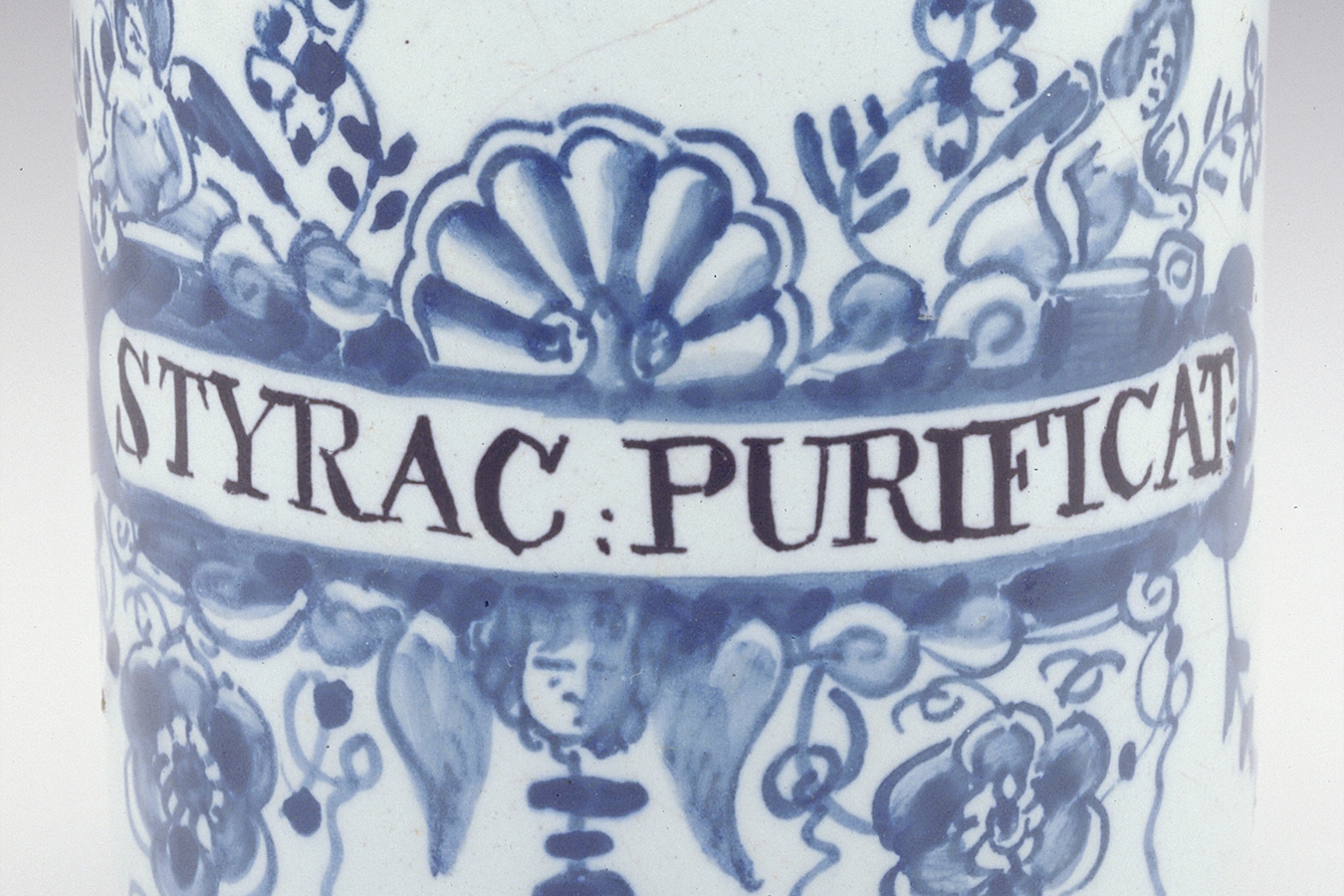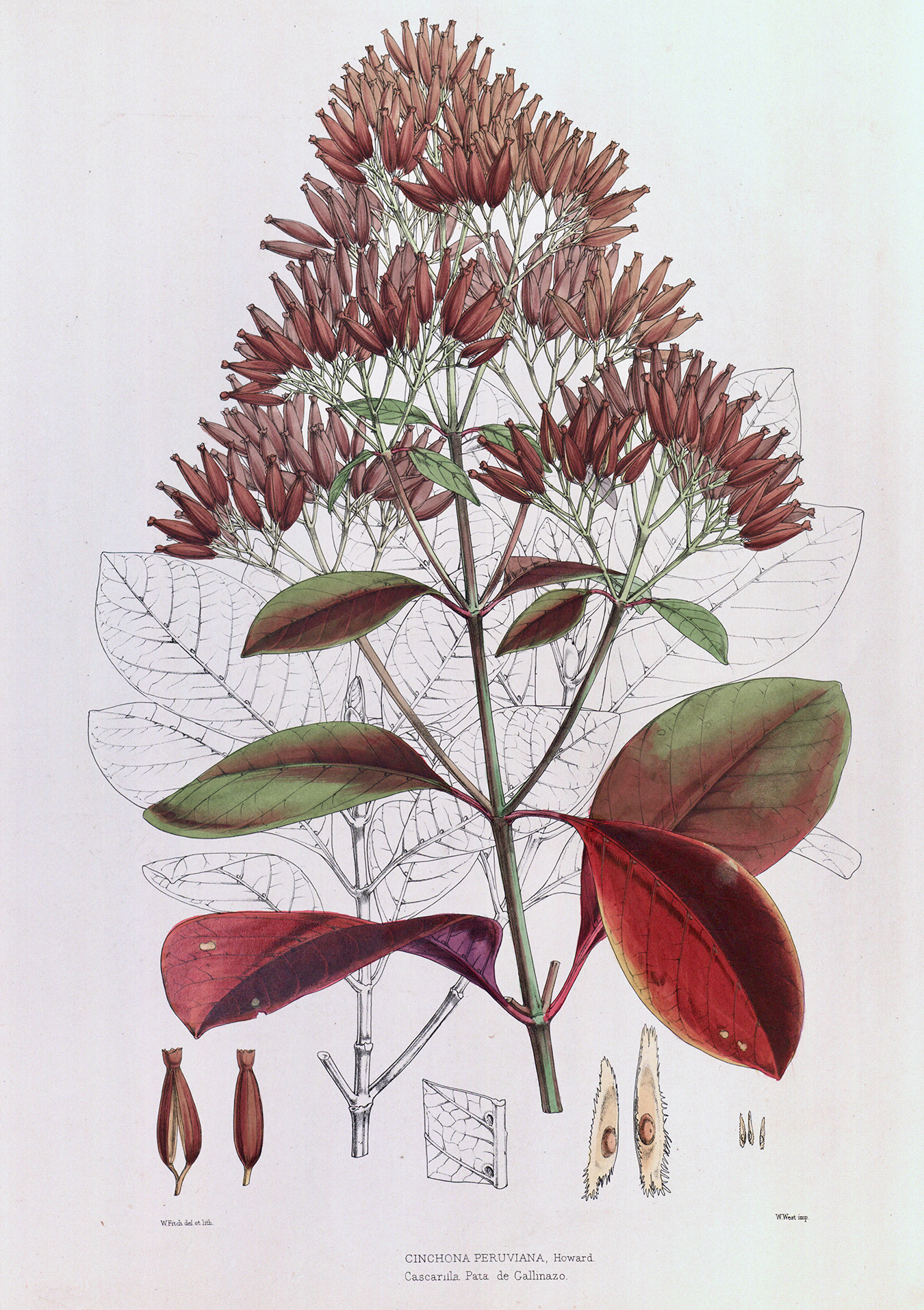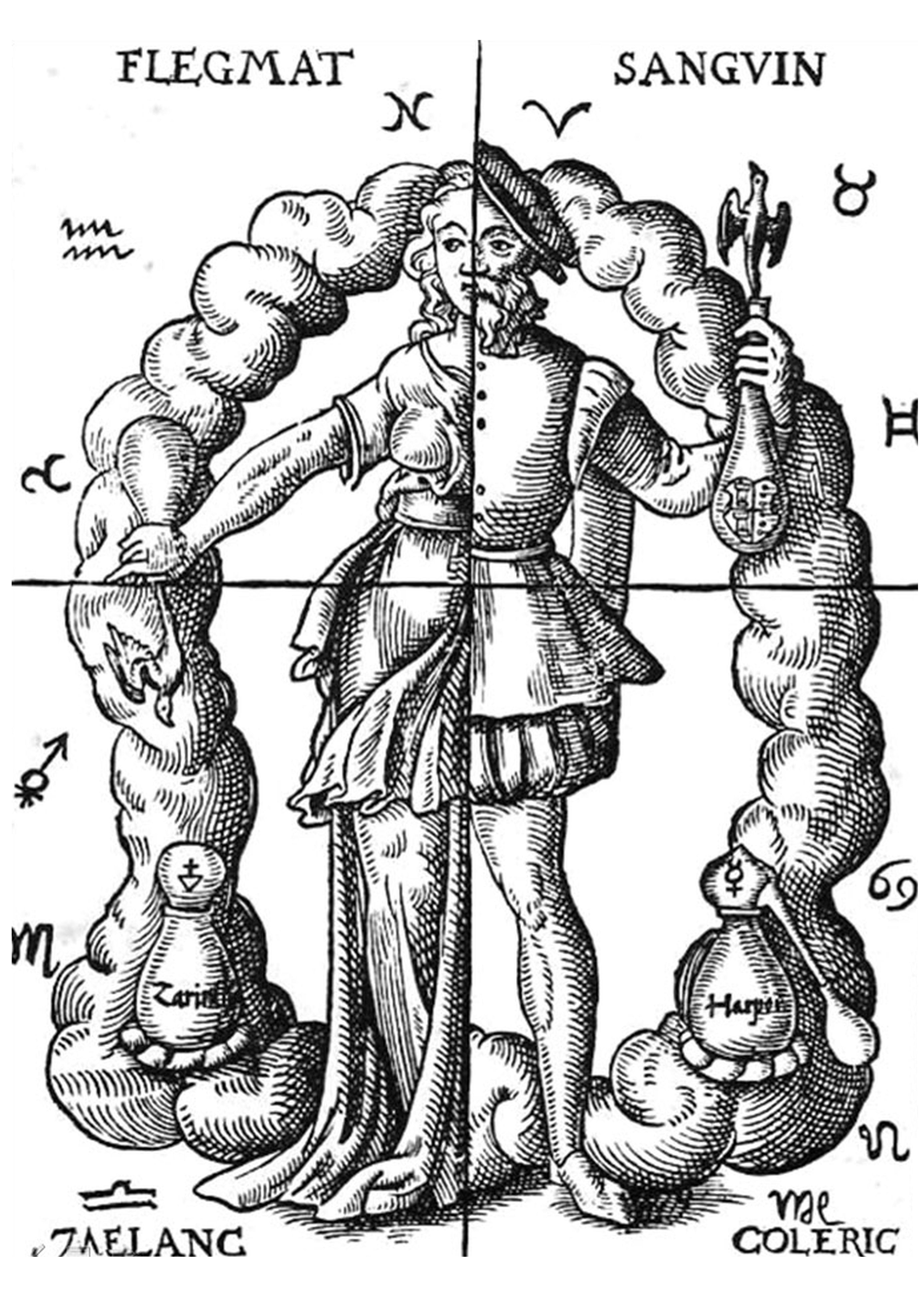
Ingredients, Health & Household Medical Culture
Before developments in global trade imprinted the importance of alcohol on Atlantic colonial economies, alcohol had, for centuries, a strong presence in medical practice within European regional economies and food cultures. The process of fermentation, where sugars and yeast collide to produce alcohol, emerged in different parts of the world during the Neolithic period thousands of years ago. The earliest evidence of wine made from fermented grapes comes from the Caucasus region, in Georgia, about 8,000 years ago. Distilling involves concentrating (increasing the alcohol ratio, or “proof”) a base alcohol by removing water and other impurities through evaporation and condensation.1 Arab-Persian alchemists in the Middle East started experimenting with distilled alcohols in the 800s for medical applications. It took about 300 years for this technology to spread to Europe, where distilled alcohols first gained currency in the treatment of maladies. Although the guests entertained in spaces such as the Grand Salon and the Providence Parlor perhaps did not think of their beverages as medicinal, much of what they imbibed was shaped by earlier medical theories and herbal remedies.
The Wangensteen Historical Library of Biology and Medicine at the University of Minnesota (WHL) holds a collection of manuscript (handwritten) recipe books. During the medieval and early modern periods, when university-educated physicians were scarce and costly, people often managed their own health. From the 1100s, when distilling took hold in Europe, religious orders and both male and female heads of household often distilled medicines for their family members and community at large.
The document below, handwritten by an unknown author and held in the WHL collections, features a recipe for wine bitters. 2 Use the tool to zoom.

View in the Collection (Click here to zoom.)
Gift of Mr. and Mrs. George R. Steiner, Minneapolis Institute of Art
Like rum and brandy in the eighteenth-century Atlantic world, herbs and spices were prominent actors in global trade, exploration, and colonization. Europeans had long been accustomed to spices like ginger, black pepper, and cinnamon due to extensive trade along the Mediterranean between Italy, Spain, North Africa, and the Middle East. The early centuries of heightened exploration into the Western Hemisphere provided an exciting opportunity for Europeans looking to profit from new plant materials from as-yet, at least to them, unknown locales.
Like rum and brandy in the eighteenth-century Atlantic world, herbs and spices were prominent actors in global trade, exploration, and colonization.

WHL
Certain food items, like maize, tomatoes, and potatoes, made the journey to Europe and became integral to regional cuisines, such as tomato sauce and polenta in Italy and the potato-based tortilla española in Spain. Many of the items that were so exciting to the colonial powers of Spain, England, and France were seen to be potentially useful medicinally. For example, Europeans had high hopes for the bark of the cinchona tree, sometimes called Jesuit’s Bark, which they thought of as a miraculous cure for many diseases, including syphilis. Although it is ineffective for that use, they learned from indigenous Peruvians that it could treat malaria. The active ingredient in cinchona bark, quinine, continues to be used today as an antimalarial.
European medicine in the premodern period relied on theories that defined health as a perfect internal balance of four humors: blood, black bile, yellow bile, and phlegm.

European medicine in the premodern period relied on theories that defined health as a perfect internal balance of four humors: blood, black bile, yellow bile, and phlegm. External factors, such as food, weather, pestilence, and physical activity, as well as divine intervention, were understood to throw humors out of balance, resulting in illness. So, medicines—as well as foods and beverages—were carefully designed to restore or maintain each person’s internal harmony. Alcohol was essential to this program of early herbal medicine because it is such an excellent carrier of other ingredients. Distilling or infusing spirits with herbs and other ingredients is a way of transferring their flavors, smells, and colors into a liquid that is shelf-stable, often for long periods of time when alcohol levels are sufficiently high. Through the distillation process, the “bite” of alcohol, too, might have made the original ingredient appear amplified. Hence, medicinal ingredients, such as cinchona bark, were distilled or infused into spirits like brandy and rum in order to make medicines and, later, recreational beverages.3
Notes
- “How Distilling Works,” Vine Pair, accessed November 8, 2018, https://vinepair.com/spirits-101/how-distilling-works/ ↩
- Page from a manuscript recipe book with two recipes for Wine Bitters. Cookery and Medical Receipts. 1820. Manuscript. Wangensteen Historical Library of Biology and Medicine, University of Minnesota.” ↩
- Smitha Mundasad, “Alcohol Therapy: Medicinal Drinking Through the Ages,” BBC News, January 15, 2014. ↩